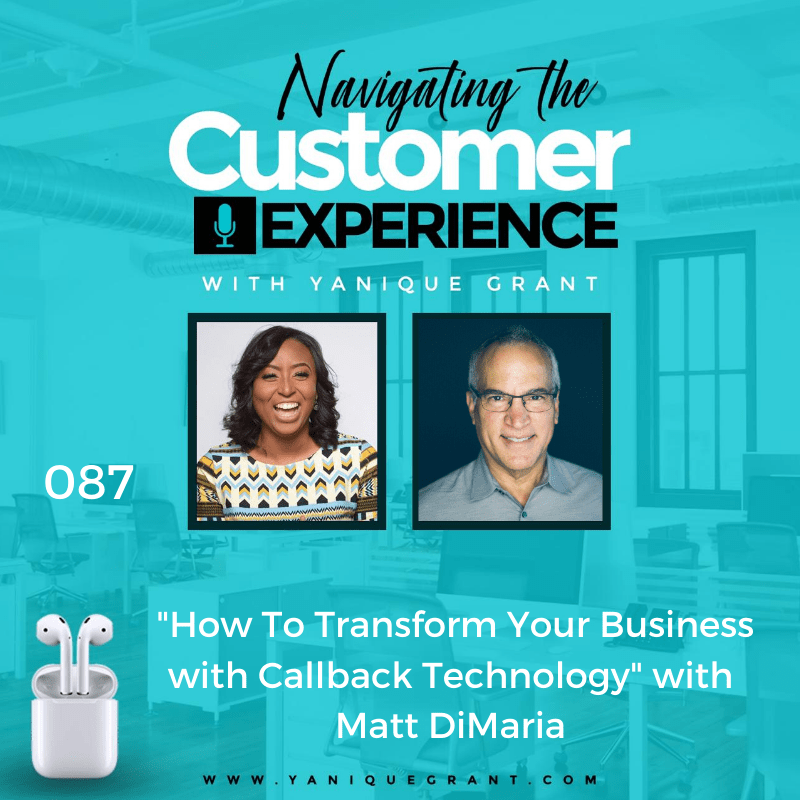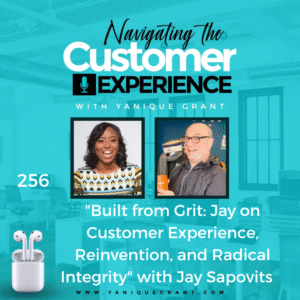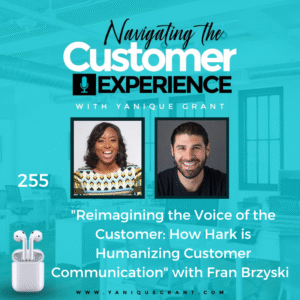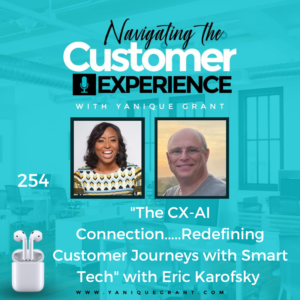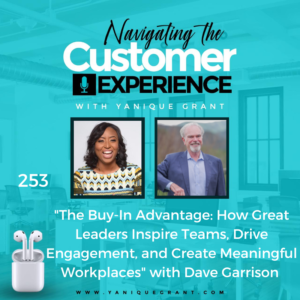Matt DiMaria is the president and CEO of VHT, vendors of the callback software category, serving 280 of the largest brands in the world. Last year, VHT served over 225 million callbacks to consumers from brands such as Bank of America, AT&T, United Healthcare, Comcast and many others. Matt specializes in developing high performance teams in consumer and enterprise software – having contributed to creation of over $2 billion in value to shareholders, employees and investors.
Questions
- Could you share with us a little bit about your journey, how it is that you got into this callback service, a little history, and also why it is that it led you on this particular path?
- Could you share with us some of the other things that VHT offers? I know we spoke about a callback service. Is there any other part of the technology that allows companies to really delve into satisfying their customers in a better way?
- You’ve been in the customer experience arena for many, many years. How do you see customer experience changing over the next 5 years, especially in light of the fact that we’ve all been forced to have to make adjustments to how we deliver service to our customers because of this pandemic that we’re experiencing globally. Do you see that transitioning the landscape of customer experience as we move forward?
- Could you share with us how do you stay motivated every day?
- What’s the one online resource, tool, website or app that you absolutely can’t live without in your business?
- Could you share with us some of the books, maybe one or two that have had the biggest impact on you, whether it was a recent read or maybe something you read a very long time ago that stays with you to this day?
- Could you share with us what’s one thing that’s going on in your life right now that you’re really excited about – either something that you’re working on to develop yourself or your people?
- Where can listeners find you online?
- Could you share with us one quote or saying that during times of adversity or challenge, you tend to revert to this quote because it kind of helps to refocus you and kind of just get you back on that path.
Highlights
Matt shared that the journey to be VHT for me started in 2017, partnered with a wonderful group of investors in the San Francisco Bay Area, a firm called Alpina Investors and they partnered with the goal of looking for businesses that really capitalized on two trends that they thought were important. One is the increasingly critical role that artificial intelligence automation would play for delivering customer success information.
So, whether that would be for, let’s say, product level requests, people are gathering information and making a purchase decision or break fix type of requests where individuals are calling in because they’re having difficulty working with a product or service and need the help from a brand to accomplish that. And our sort of underlying assumption was in this increasingly complex, multi-device world, consumers will have greater need for services but there’s a finite capacity of skills and knowledge to service that demand.
And it turned out VHT really capitalized on both of those trends. What callback software ultimately is all about, particularly for these very, very large brands like Bank of America, or a big airline or consumer brand is they deal with a tremendously high volume of calls that are coming into a contact centre, but they have finite agent capacity to serve those requests.
“And anytime there’s a gap or a breakdown in that, we all experience that as hold time and probably one of the very few universal negative experiences that we have when we’re trying to get help from a brand is more waiting on hold.“
Matt DiMaria
So what VHT does is takes that time and transfers it to when the consumer is available and an agent is ready to talk to that customer and because they do that at such a large scale, it ends up being something that creates a lot of brand loyalty. So, it drives up net promoter scores and customer engagement, but it also saves the brand an awful lot of money, because instead of having staff for situations where they have peak demand at all times, what they can do is staff to a more sustained level and then make that capacity available to meet the customers when they’re available to serve them.
So, they saw that as a wonderful opportunity. And about a year and a half ago, about 18 months ago, they acquired a virtual hold and since that time, they’ve been investing to advance that into a similarity that he’s I’m happy to talk about.
I asked what does VHT stand for? As it wasn’t on the website. Is it Virtual Hold Technology?
Matt stated that that’s exactly right. The company was founded 25 years ago by a brilliant entrepreneur named Mark Williams, the original name of the company was Virtual Hold Technology and as the name implies, it’s really all about callback.
Me:Great, so this software, I think, is brilliant. I don’t know if you service organizations in Jamaica but if you don’t, I think there is a great opportunity here. So, I host my website with GoDaddy and I’ve been having a lot of challenges upgrading my website in the last few weeks in relation to my developer and having it migrated and there’s just a lot of issues and so I have to be calling GoDaddy quite often, of course, with Coronavirus, they’ve had an exceedingly large volume of calls and they have the option.
First of all, they advise you of how long the wait time will be and they’ll say like 20 or 25 minutes. And then they say, “If you’d like for us to call you back in 20 or 25 minutes, we can give you back a call.”
And of course, because they have my number in their system already, it’s just a matter of me stating my name after they’ve put on a beep and it’s been brilliant, it works wonderfully, I don’t need to sit on hold and they call me back and when they do call me back, I’m not waiting for more than about maybe 20 seconds before the call actually is transferred to a live human being. So, I must commend you. I think it’s a brilliant software, and I think every business should implement it, especially if they’re experiencing, as you said, a large volume of calls.
Matt agreed and stated that there’s no question and the experience that you’re having, of course, is something that’s familiar to us all at the moment because of the COVID-19 virus and they’ve (VHT) been very active in adjusting their business model and their offerings to support companies that are experiencing a lot of strain as a result of COVID-19.
They launched a program several weeks ago now, about a little over a month ago called the Virtual Hold COVID Assistance Program and the goal is to make not just their callback capabilities, but their automation capabilities, their messaging capabilities that are newer, coming from the company available to businesses or even local government organizations that are suddenly finding themselves, for example, not being able to be in their office and consumers or tax holders or people seeking information about the virus and so forth, calling into their local offices trying to get answers to questions and they’re just not equipped to operate.
And so, they’ve been delighted to work with some local governments, some healthcare providers and others to provide their capabilities at no cost for 30 days, which, as we all know in the early stages of the virus outbreak, was quite critical. And now what they’re finding with their customer base businesses that they’ve been doing business with for quite a long time, they’re also helping them make longer term plans because, thankfully, the virus will not last forever and as they begin to normalize their businesses, they’re able to help them deliver consistent service levels even as the staffing is a little bit uncertain, unfortunately.
Matt shared that their vision for their company is to enable people to get the help they need for brands they love on terms that they choose. And callback is, of course, very illustrative of that. But as they thought about that vision, they also looked at not just where the market has been, but where the future is. And they arrived at a focus on the mobile device as the primary device in which almost all of us now are using to make inquiries to brands, to make phone calls, but also, of course, it’s our primary communication tool to interact with each other.
And in the context of a person to person interaction, we’re messaging with friends or communicating with friends, that’s not just a voice experience anymore. In fact, overwhelmingly, people are preferring even for the initial contact with a friend to be through an SMS perhaps interaction or through a mobile messaging application of some sort.
And then, maybe you ask, “Hey, are you available to talk on the phone right now or would you be available later?” So, the ability to move from a messaging interaction to a voice interaction is something that we all just take for granted because we’re all equipped with a smartphone.
“So, what they see going forward is that’s how every major brand is going to have to interact with their customers.”
Matt DiMaria
So, they developed a new platform that they call Mindful and what Mindful does is delivers as a SAAS offering, a way for large brands to interact with their customers in the manner in which they prefer so they could start, for example, with a SMS interaction asking for information about a product or service or how particular solution needs to be implemented or checking on a reservation, checking in on a bank balance, could be anything. And to enable that to be initiated in either a voice call or through a messaging interaction and then for the brand to interact with them as though they were a friend, so be able to maintain the session information over time, because as we all know, you bring up your friends messaging session and you can see the whole conversation history, the consumer can see the whole conversation history.
So, they want to do the exact same thing for large brands to enable them to interact with their customers and preserve all that conversation history so there’s always context on the history of the relationship, perhaps the evolution of a problem and things of that sort. And that’s what they’re delivering on the Mindful platform, is a complete toolset, if you will, to make interacting with a large brand, just like interacting with your best friend.
Me: So it’s almost like the WhatsApp version of a company experience?
Matt agreed. He shared what’s difficult of course, is to do that at scale. So, as he mentioned, if you’re a large airline or a large bank where you have bag of millions and millions of consumers that you’re interacting with, you end up with a very unique set of challenges, hopefully, as he mentioned, we’re back to more normal situations where maybe there’s a power outage in a particular area or perhaps, a hurricane if you’re in Jamaica, you’re familiar with the weather being very disruptive. And the airlines need to be able to adjust to changing conditions, but yet deliver consistent service and if you’re operating multiple contact centers or things of that sort.
Sometimes the contact center is going off line and you need to shift some of that demand to a contact center that’s currently available. So, that’s where they feel like they can bring just a lot of value is when these problems are really on a large scale, spanning millions of consumers and make sure it’s a great experience for the company and also a very significant financial benefit, because, as he mentioned earlier, they’re able to maintain a more steady staffing level, even though demand might be very dynamic.
Me: Mindful platform and we can access that through your website, www.vhtcx.com allows for this seamless transition across talk and text. Does it provide analytics as well?
Matt shared that the other real key pieces, there’s really two other real key elements. First is automation’s, because as you move between different channels and different sessions and so forth, there’s an opportunity to gain efficiencies by applying bots and artificial intelligence and automation really weaves together the transitions between a voice interaction that could be with a live agent to a bot, to an A.I. service.
And so, automation is one piece of it but as you mentioned, all of this needs to make sense from a business standpoint in terms of ensuring that service levels are being monitored and maintained, being able to look at what the different queue conditions are and the relative performance of how the cues are responding to what customer demand is. Obviously, there’s cost associated with that. So, the analytics gives them the ability to work with their customers to ensure that they’re not just delivering a great consumer experience, but that also it’s making financial sense and business sense as well.
Matt shared that he thinks that we are all being conditioned into a new set of expectations as a result of mobile devices. And we take it now as second nature that we have this very powerful supercomputer we carry with us. And it’s connected up to a global network that is able to provide services and data on demand.
And what we believe is that the sort of traditional contact center that was really designed around when telephones were something that were attached to a wall with a cable and that the customer’s experience expectations are dramatically different.
And the technology to service them, therefore, must also reflect that evolution. So, first and foremost is authentication and really that speaks to in order for a brand to be able to meet the customer’s needs, they need to know who you are and so there’s tremendous work going on to dramatically simplify authentication, whether that’s an app or through a messaging interaction or voice interaction. And the challenge there, of course, is it needs to be as frictionless as possible but at the same time, protect the private information, enable sensitive information such as, if it’s health care data or financial data to be exchanged in it as frictionless a manner as possible.
The second piece is, as he mentioned, how the customer wishes to be served. So, once he knows who you are, then he can start understanding how best to serve you. So, for a younger demographic, let’s say they may never want to talk on the phone at all, they may want to conduct all their business through a digital interaction, whether that’s an SMS, an in app experience or a digital experience on the company’s website. So, being able to have that preference understood as early in the experience with the customer as possible so that it can be delivered appropriately.
And then, of course, it extends out into multiple devices and especially as we look at Alexa and other smart devices that are increasingly capable of native voice interactions with no human involvement. That’s going to be a very important area of evolution and how we expect to be served. We want to be able to ask questions and get answers pretty instantaneously and so that is going to involve the voice assistant technology, again, complemented with A.I. and automation to really make that a seamless and delightful experience for their consumers.
But in the end, they also believe that agents will continue to play a vital role because just the nature of complex interactions with customers or particular, it may be that the customer prefers ultimately to talk to a human being, if that involves, let’s say, retirement planning or vacation plan and things of that sort where you might need human expertise or human judgment on how to resolve a particular issue or answer a particular question. So, they see that the agent continuing to play a vitally important role or maybe more a general is a subject matter expert to continue to play a very vital role in delivering great customer experiences for the foreseeable future.
I agreed and stated, I think technology is awesome, it really has made things simpler and I love that word that you use frictionless or effortless. Less effort we customers have to invest in anything that we’re doing makes our life that much easier. But I still do believe that people still crave at some point some human interaction because the reality is, when you call a company or you’re trying to reach out to them, you’re really only reaching out for two reasons, to make a request or to make a complaint.
And so, if it’s a complaining issue or even if it’s a request, I’m thinking you want some form of immediate feedback. I mean, one of my pain points, since Coronavirus is, a lot of local organizations in Jamaica have taken up WhatsApp as a method of communication with their channels but they’re not responsive. You’ll send a WhatsApp message at 9:00 am in the morning and nobody responds to you until 3:00 pm in the afternoon, had I wanted to wait 6 hours for response, I probably wouldn’t have contacted you.
Matt mentioned that that’s wonderful example of when we think about customer experience. Ultimately, we are emotional beings. And so, something that makes him happy and feel good when he interact with a brand is really what the brands need to aspire to deliver to their customers. And so, if he’s disappointing the customer and the callback world, if they say that your phone is going to ring in 20 minutes and there’s going to be an agent on the phone, you expect as a consumer for your phone to ring in 20 minutes and there to be an agent on the phone. And so, that’s an example in the callback domain.
In the WhatsApp example or other digital examples, he thinks we all have experienced automations that fall well short of what his expectations are, because they’re very task specific, they’re perhaps very repetitive or the information that he’s providing them never makes it to a human agent that by the time he’s talking to an agent, he has to reintroduce himself, re-explain the problem and all these sorts of things. So, the ability to apply the appropriate amount of automation to make it very easy to onboard, very easy to initiate contact with the brand but ultimately, as you experienced it, you need to think it all the way through to, “Why did this individual contact me and am I resolving that in a timely and delightful manner?”
And so that’s not easy for brands to do because you’re experiencing it right now. Obviously, those organizations would love to deliver a great experience but it does involve really thinking through completely what the end to end experience is going to be that you serve to the customer and that’s really where they focus a lot of their energy is delivering a great customer outcome. So, that’s the key to the whole thing, it’s not the technology, it’s that ultimately that emotional, you smile at the end of the interaction and all too often we don’t experience that very often in interacting with brands.
When asked how does he stay motivated, Matt shared that in a very direct sense, he thinks every day is a gift and he heard a quote a long time ago that really stayed with him, which is that,
“Each moment and each breath is a new beginning.”
Matt DiMaria
And he thinks it’s very easy for people to get distracted by maybe what happened yesterday or what might happen in the future but he’s certainly really taken a lot of motivation from just looking at the opportunities that you have. Even solving problems today is delivering a lot of value and one of the real things they’re privileged with at VHT is they get to do their job still, even though their company is remote, unlike so many people that are suffering and being dislocated and so forth. So, getting motivated is not a challenge at all. They’re getting up every day and they know they’re helping millions of people get answers to questions and he finds that personally to be very motivating.
Matt shared that for operating their business right now, they’re heavy users of the Zoom platform for video and collaboration but a close second behind that is Slack. And so, those are the two tools they’ve been leveraging very heavily internally for their internal communications and for the customer communications, because most of their customers are large companies, those tend to be whatever the tools are that the customer prefers for them to use to interact with them and their brands. But within their business, they’re leaning very heavily these days on both Zoom and Slack.
When asked about books that have has the biggest impact, Matt shared that the one that was from a long time ago that made a big impression on him is called The Executive in Action : Three Drucker Management Books on What To Do and How To Do It by Peter Drucker. It’s actually three books in one. If you study management thinking for any period of time, ultimately, whether it’s somebody that just published a book last week or somebody published a book 10 years ago, they all go back to Peter Drucker and it’s a common point of origin. He’s a very forward thinking man and did an incredible volume of work so that is the first one from long ago. More recently, his wife gave him as a present at Christmas time, turned out to be very timely that’s Meditations by Marcus Aurelius. Marcus Aurelius was one of the Roman emperors, first part of the new millennium and he was a philosopher and stoic philosophy and that really focuses on being in the moment. And that’s the short version of he’s new to stoic philosophy so he will not attempt to over explain what it is, but it really is all about making sure that you’re staying in the moment and trying to serve good always. If you’re in the moment and you’re trying to serve a good purpose, then generally speaking, you’re on the right track.
I mentioned that it’s funny you said that because it dovetails nicely into this new principle that many organizations and their leaders are embracing, which is mindfulness. And it also matches back with the name of your new platform, mindful. So, what I’m getting is it’s being present in all of those moments that you are sharing with each and every one of those customers in order to build stronger relationships.
Matt agreed and stated that it is coincidental that the Marcus Aurelius practice and stoicism really is about mindfulness. And he thinks their brand, they thought very deeply about it that wasn’t something that they came up with because they thought it was a catchy name.
They wanted to convey what their intent is, and they felt that mindful really conveyed their intent; the reason why they get up every day is, as he mentioned earlier, to service that vision of enabling people to get the help they need from brands they love on terms they choose. And for them, that really meant that you approach people in a thoughtful way, in a sensitive way as to what their preferences are. And, of course, there’s the connotation around artificial intelligence and some of the other things that ultimately can be brought to bear on delivering great customer experience.
And so, when they first came upon the idea of branding their new offering, Mindful, they got really excited about it very quickly. So, it’s Mindful by VHT.
Matt shared that one of the things they adopted after the Coronavirus hit is they do a call every single day, they call it coffee tea time and it’s completely voluntary for their employees to come to that. And it was intended to be, as the name implies, just a place to come and relax. When people are working from home, it’s easy to get lonely. We’re all human beings and social animals.
So they thought it’s a nice place to gather but what’s sort of come out of that for them is they also saw that as a place to bring motivation and light and encouragement to people. And one of the things that they hold as one of their core values is that they are pursuing things with a sense of passion and purpose, that’s an individual expression. And so, what they’re doing now is something he has gotten directly involved with is they are reaching out to people to join them during their coffee time that they’d be motivating to hear from. That would bring light and sort of insight, of course, things that are relevant in the world that we work in, but also relevant in terms of people that have really lived their passion in life.
So they’re actively inviting people to come in. It’s similar to what they’re doing right now, have a 10 or 15 minute conversation and then invite the employees to ask questions and just have a discussion. So, they’re bringing people from across the industry and people that they’ve met over the years that they think would be of interest to the team, to commence on. He’s very excited about that and he doesn’t think they’ll do it five days a week, but he thinks they will do it one or two days a week. They’ll have an outside guest come in and join them. So he’s very excited about that.
I asked, so have you started as yet or is it something that’s ongoing?
Matt shared that he just confirmed his first 2 guests. So, now they’re getting more nominations from some employees on people that would be fun to have come. And so he’s excited about inviting them.
- Matt shared listeners can find him at –
Facebook – @vhtcx
LinkedIn – VHT
Twitter – @vhtcx
YouTube – VHT
Website – www.vhtcx.com
Matt mentioned that first and foremost, he would love you to follow their company, he monitors that quite closely. So, if you have questions or areas of interest, please like them on those platforms or join them on those forums. And he’d love to talk with you there.
- When asked about a quote or saying that helps him refocus, Matt shared that he’s going to quote that ancient philosopher Yoda…..
“There is no try. There is only do or do not.”
Yoda
Links
- The Executive in Action : Three Drucker Management Books on What To Do and How To Do It by Peter Drucker
- Meditations by Marcus Aurelius
Do you want to pivot your online customer experience and build loyalty – get a copy of “The ABC’s of a Fantastic Customer Experience.”
The ABC’s of a Fantastic Customer Experience provides 26 easy to follow steps and techniques that helps your business to achieve success and build brand loyalty.
This Guide to Limitless, Happy and Loyal Customers will help you to strengthen your service delivery, enhance your knowledge and appreciation of the customer experience and provide tips and practical strategies that you can start implementing immediately!
This book will develop your customer service skills and sharpen your attention to detail when serving others.
Master your customer experience and develop those knock your socks off techniques that will lead to lifetime customers. Your customers will only want to work with your business and it will be your brand differentiator. It will lead to recruiters to seek you out by providing practical examples on how to deliver a winning customer service experience!
Listen to past episodes of Navigating the Customer Experience | Join Our Mailing List for future articles, podcasts and videos on Customer Experience

